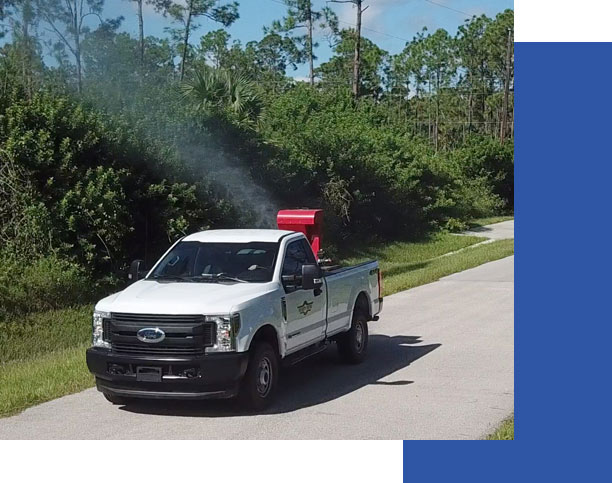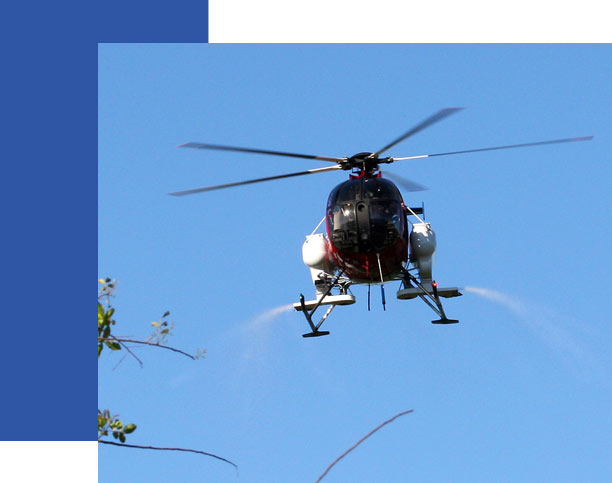Controlling Mosquito Larvae
This approach is part of our Integrated Mosquito Management program, and it works by interrupting the mosquito’s life cycle. If we stop larvae from developing into adults, that means fewer mosquitoes flying, biting, and spreading disease later on.
How it Works
These materials include biorational microbial larvicides, such as Bacillus thuringiensis israelensis (Bti), Lysinibacillus sphaericus (Bs), and spinosad. These naturally occurring substances specifically target mosquito larvae and are safe for people, pets, and wildlife, and many are even certified organic by the Organic Materials Review Institute (OMRI). The District also uses insect growth regulators (IGRs), which prevent larvae from maturing into flying adults. These larvicides are applied in liquid or granular form and are delivered by truck, helicopter, or drone to reach both urban areas and hard-to-access habitats.
The District’s Buffalo Turbine’s disperses a fine mist of Bti or Spinosad and is used primarily in heavily populated areas where the Aedes aegypti mosquito breeds in containers of standing water near homes and businesses. This mosquito species can transmit Zika, Yellow Fever, Dengue and Chikungunya.
Our field technicians apply larvicide whenever they find mosquito larvae during inspections. Depending on the location, they use trucks, ATVs, boats, or apply the product manually.



